“History is written by the victors.”
Winston Churchill
Stephen Towns grew up learning a distilled presentation of his ancestors’ history, and he’s now committed to helping raise awareness of what really happened, through the medium of quilting.
The recorded history of slavery and its impact in the United States has been diluted and misrepresented since Reconstruction. Textbooks and other academic resources have presented majority group interpretations of what happened, and now current attempts to suggest otherwise are fuelling heated censorship battles across US schools, libraries, museums and more.
Relying upon extensive internet research, museum visits, reading and other investigations, Stephen began by painting the truths he uncovered. But in 2014, after months of reflection, his inner muse kept pointing to quilting as the best medium for the stories he had to tell.
But here’s the catch: Stephen had never quilted before.
Undeterred by this, Stephen turned to YouTube, library books and most importantly, his childhood memories of rummaging through his mother’s sewing stash.
As the saying goes, the rest is history. And Stephen’s stamp on history is helping set the record straight in a remarkable fashion.

A mother’s influence
Stephen Towns: Growing up in South Carolina, I remember creating handmade dolls and pillows using bits of cloth and polyfill from my mother’s sewing stash. I’d gather bits of fabric and use a spool of thread and needle she no longer needed. Then I’d give the finished pieces to my mother as gifts. I also remember making clothes for my sister’s Barbies, and her Jem and the Holograms dolls.
“Looking back, I now realise how creative my mother was.”
Stephen Towns, Quilt artist
She would make clothes for me and my siblings. The bits of fabric and old sheets we no longer used would come together as quilts. She was also a knitter, and she wove beautiful sweetgrass baskets using the seagrass, palm fronds and pine straw we collected. That’s probably why she encouraged my creative spirit and would sometimes allow me to sit with her when she worked.
In terms of textile art, I learned a small bit as a child, but my family more so encouraged my love of drawing and painting, as did all of my grade school teachers. I studied fine art at the University of South Carolina, intending to just focus on becoming a better painter. I later began incorporating fibre and paper into collage paintings, but I didn’t experiment with creating complete fibre pieces until 2013.


To paint or to stitch?
When I want to tell a story, the subject matter determines if it needs to be told through painting or quilting, or sometimes, both. It’s difficult to explain how I decide. It’s just a feeling I get.
Studying art has helped me learn about the principles of design, such as form, colour and composition. Those are all skills that I also rely upon when I create my quilts.
“I think of my paintings and drawings as windows to another world, and that’s what I also want for my quilts.”
Stephen Towns, Quilt artist
When designing and piecing the quilt tops, I’m thinking about form and composition. When I’m picking out fabrics and threads, I’m relying upon colour theory. And when I’m quilting the three pieces together, I think of it as sculpting.


Navigating quilt shops
Collecting quilting materials can be an interesting part of my creative process. It takes mental and emotional energy for me to shop for fabrics. Here I am, this big Black man, going into quilt shops that are largely frequented by older White women. When I enter, there’s a lot of curiosity and nervousness. Why are you here? What are you doing?
So, I find myself having to explain my process and show them my work. They’re usually kind and impressed, but it’s still an effort on my part to remove any fears they might have about who I am. There isn’t as much concern about me at the stores I frequent, but it does still happen when I visit a store I haven’t been to before.
“There are times when I can sense fear and questioning from people working at the store, so I’ll strike up a conversation.
The energy often calms down after I share photos of what I create.”
Stephen Towns, Quilt artist


Telling the truth
My work is often based on Black American historical figures or events, especially moments that can be challenging to discuss. I want my art to be an avenue for education and understanding, so I title my works to give a bit of context or I provide written material to help viewers understand what’s going on.
I love going to historical museums and sites whenever I travel. Many of my stories and subjects come from those visits, along with books, podcasts, documentaries and conversations. Living in the digital age, algorithms are always recommending a new book, subject, podcast or archive.
I like to focus on Black American history because I’ve discovered there’s so much information I wasn’t taught. I want to share what I learn, so I’ve offered presentations and guided tours with adult and student groups.
I was particularly touched by a group of middle school kids who visited my first solo exhibition at the Baltimore Museum of Art. The kids were able to articulate what they learned about history and how that made them sad. We were able to talk about our feelings, and then we came to resolutions about how we are all miracles because we are descendants from strong amazing people of the past.
It’s important to note that in addition to my research, several of the scenes I create aren’t fully conscious choices. Many times I’ve felt like a person shows up subconsciously and guides me on how to portray them and tell their story.


The creative process
A great deal of work and planning goes into each quilt. Once I come up with an idea, I sketch it in Photoshop. I then project the image to the size I want on vellum and begin tracing to create pattern pieces. I use a fusible web to trace and appliqué each piece on a background, and then I either hand or machine stitch the two together to create the quilt top. I usually have an assistant during this process to help speed things up.
Once the top is completed, I begin quilting using batting. I like the texture, volume and sculptural quality the quilting process creates. Lastly, I add crystals and buttons to the work.
I definitely had a learning curve when it came to free-motion stitching. Because I already learned to draw, I thought it would be easy, but it wasn’t. Instead of moving my hand around like when I draw, I had to move the fabric around to quilt. It took a lot of practice, but I’ve improved.
My best tip is to purchase a good machine! That made all the difference for me. It was like night and day when I bought better machines. I use the Janome Continental M7 Professional, Babylock Sashiko and Juki TL-2010Q.
I also love hand stitching with DMC threads, and I usually use simple stitches. I love a beautiful straight stitch or blanket stitch. Sometimes I use my Babylock Sashiko to mimic straight stitches if the work permits.
In terms of fabric choices, I love batiks. I have to hold myself back when I see Hoffman batiks in a fabric store. The colours are so rich and inviting. I also love Marcus Fabrics because they often have historical patterns. Because people I know are quilters, they will sometimes give me stashes when a relative passes. I also look at estate sales, and we have a wonderful creative reuse store called Scrap B-More in Baltimore where I find materials. I’m always keeping my eyes open for places to find fabric.


First quilt
I had been mulling over sketches for a work called Birth of a Nation for a couple of years. I envisioned an enslaved Black wet nurse feeding a White baby as she stood in front of the American flag. I couldn’t figure out how to produce it in the grand fashion I imagined. Painting and drawing were no longer working, so I figured the piece had to be made from fabric.
After gathering everything I thought I needed, I tried to rely upon the sewing knowledge I had developed as a child, but I soon realised it was much more technical than I intended. Fortunately, YouTube saved me. I found a wealth of sewing and quilting tutorial channels that guided me through the process.
One of the main features in Birth of a Nation is the 13-star Betsy Ross flag. I had been searching online for that flag, and I couldn’t find one in the right size or colour I needed. I realised I’d have to make my own. By that time, my mother had stopped sewing, but she still had a big stash of materials. Because I didn’t have enough fabric and was only supposed to be experimenting, I went home to South Carolina and dug through some of her and my late sister Mabel’s fabric.
My sister would often ask: ‘How can White people mistreat Black people when our ancestors literally fed their ancestors?’. She was an inspiration behind the work, as she owned a cleaning business and would often remark about the mistreatment her service workers felt.
By using my sister’s fabrics, I felt I was paying tribute to her legacy and hard work.



Story quilt collections
An Offering was inspired by Marcus Rediker’s book The Slave Ship: A Human History. The work is intended to create a sacred space honouring those who were forced to experience the Transatlantic slave trade.
I like combining different textures and materials into one work. Combining the wood and fabric was difficult and it took me many tries to get it right.
“The wood symbolises the materials from which the slave ships were made, and the shape of each piece is meant to mimic the shape of a slave ship diagram.”
Stephen Towns, Quilt artist

Spiritual songs
A Song Remembered is a collection of works created during the 2020 Covid pandemic. I decided to create quilts based on Negro spiritual song titles. In this series, each quilt was made to create a sense of hope. I wanted viewers to see themselves in each piece.
For example, Let Us Cheer the Weary Traveler represents every person who has gone through trials and tribulations and is now seeking hope and a better life on the other side. In Somebody’s Knocking at Your Door, the mother is looking outside through her window waiting for the person who will bring hope and love to her household. It could be her God, husband, daughter, son… anyone.



A moment of freedom
On November 12, 1833, the Leonid meteor shower rained a dazzling array of light all over the night sky. It was reported the scene was so spectacular that it incited both fear and wonder all over the world. The paintings and quilts in The Night Light Fell from the Sky series presents that pivotal celestial event as a moment of freedom and revelation for the enslaved people during that occurrence.
Quilts in The Twins series take on the theme of ‘care’ using the concept of twins. Ibeji is the name of an Orisha (divine spirit) representing a pair of twins in the Yoruba religion. Yorubaland was an area in and around present-day Nigeria. The concept of brotherhood is meant to represent the importance of taking care of oneself through difficult times.
Declaration & Resistance is a body of work highlighting Black labour in the United States. A number of lines of work are highlighted in each of the works, including coal mining, education, and agricultural work. Garment workers are featured in Dressing Up where three men work fastidiously on an evening gown for a Black woman patron.



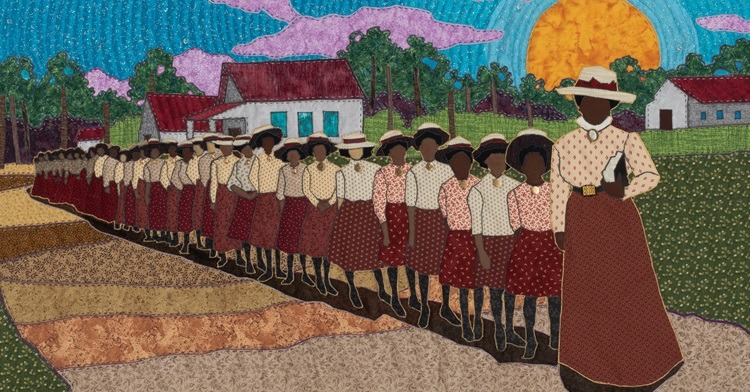
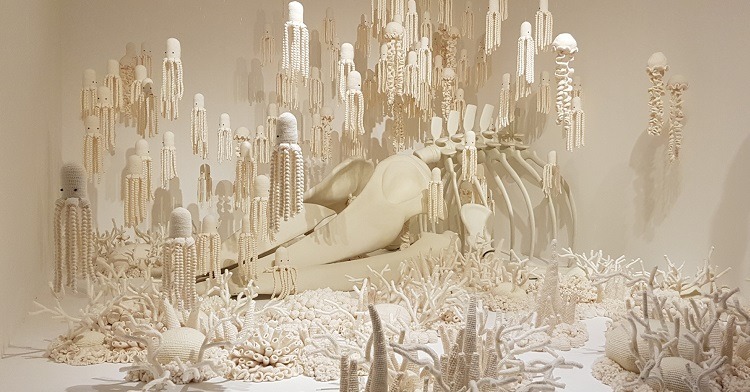
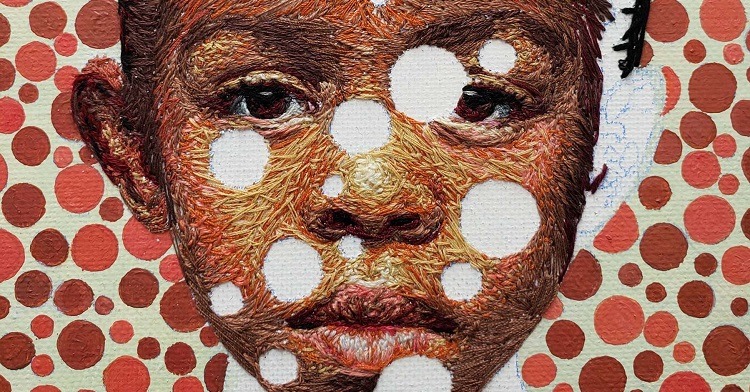
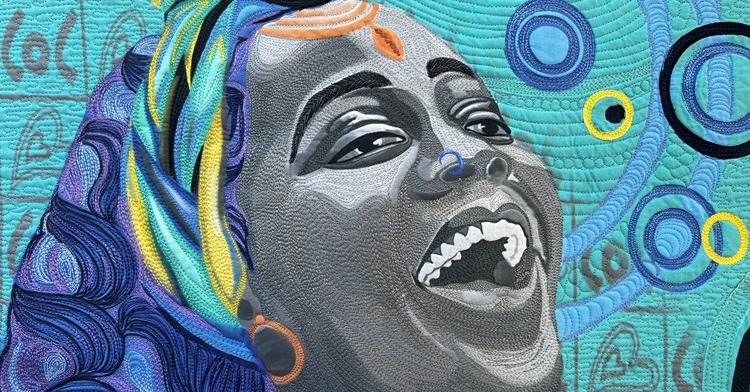

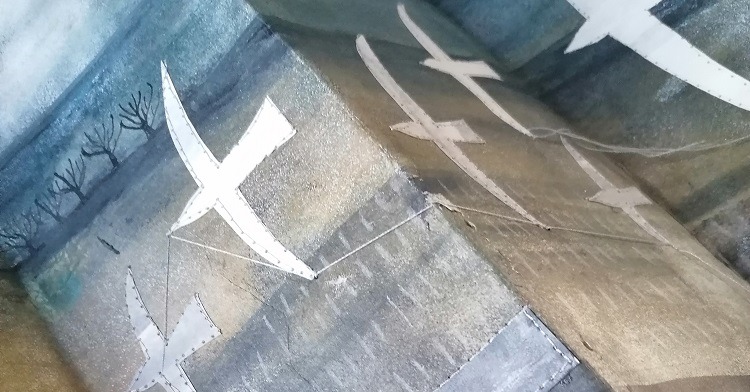
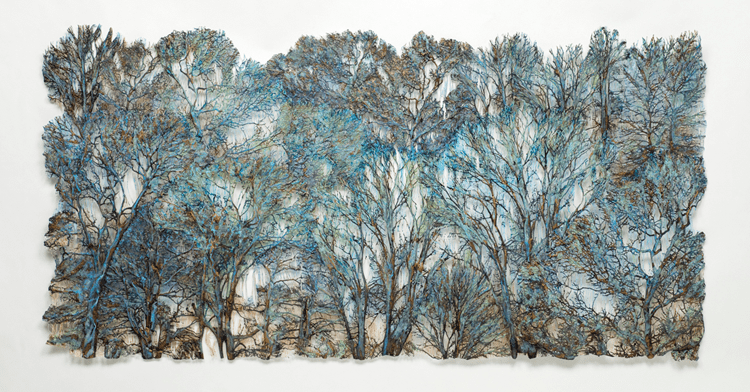
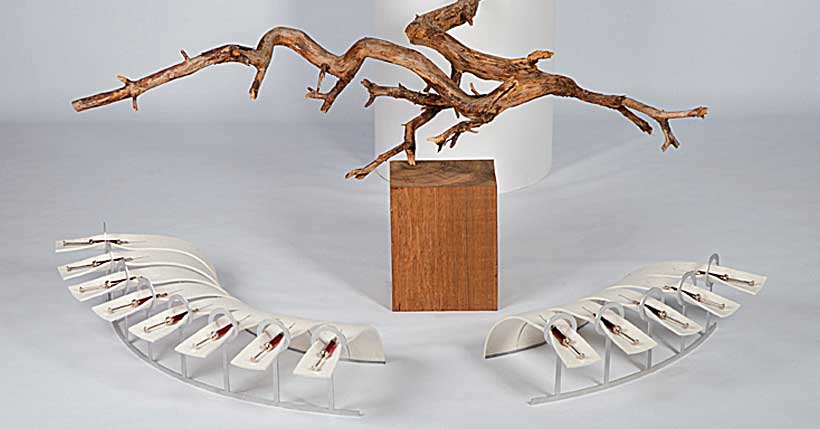
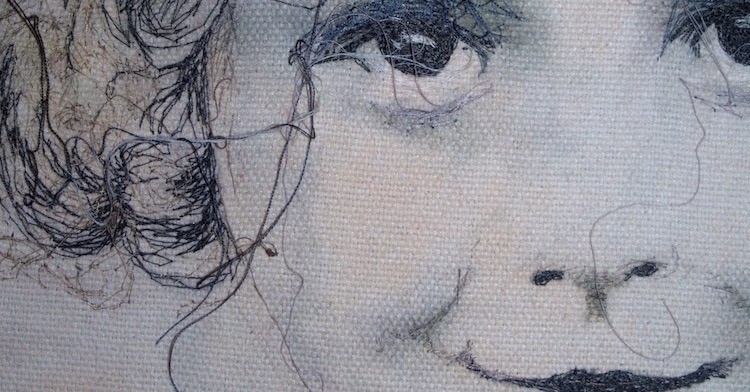
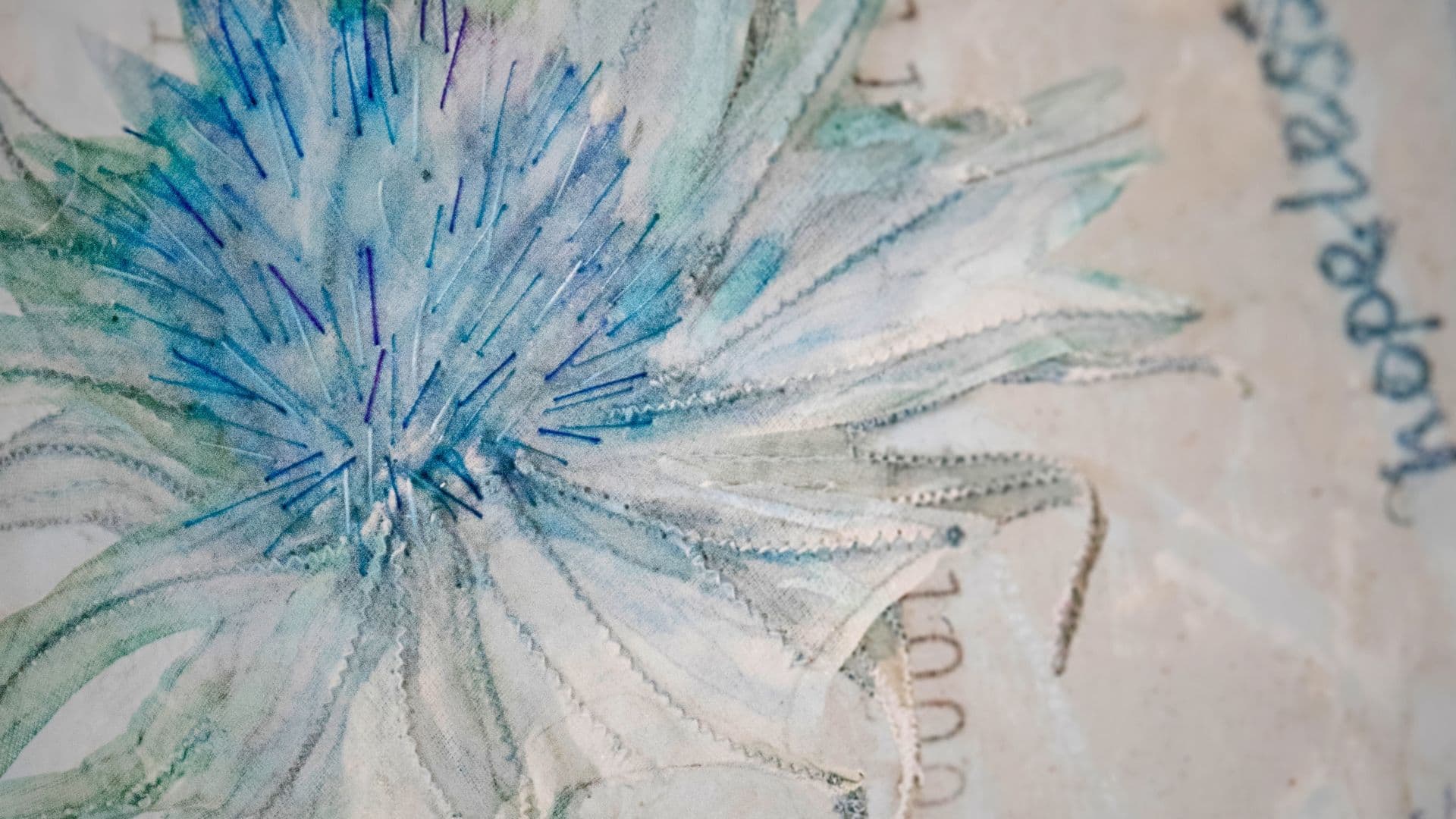
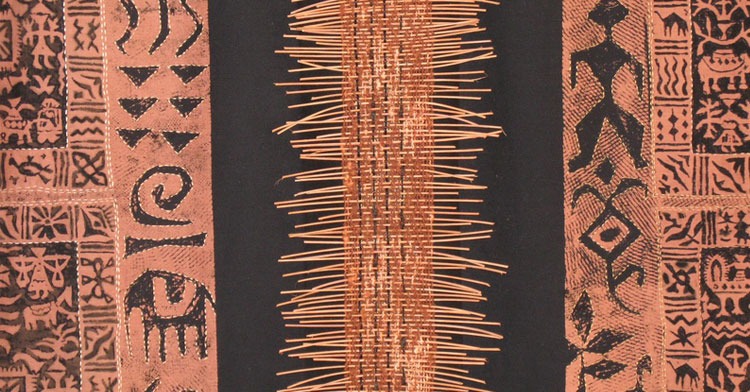
17 comments
Tanya
Loved his work and story. Heart-warming.
Susan Hungate
One of the best articles in your newsletter that I’ve read.
Thank you.
Kath Wright
Beautiful work. Would love to see these pieces exhibited in UK
pat
Loved reading and seeing all of Stephen’s work, absolutely stunning, the colours, chosen fabrics, the contrast between light and dark, the stitching, the use of crystal beads, the stance of the figures…so memorable… Fabulous, Thank you!
NwoowNews
This article about Stephen Towns’ quilting and the Black experience is fascinating! His quilts tell powerful stories with intricate details and symbols. It’s a beautiful reminder of Black history and culture. Thanks for sharing!
Colleen Fernandez
Beautiful, interesting work. An excellent way to bring history to life.
Cecelia ( Cely ) T, Pedescleaux
I am in awe of your work. Reading about you made me feel like I was talking to myself. I know what you mean about the person telling you what to quilt about them. I have conservations whit all the deceased persons ‘ fabric that was gifted to me.
Sally Bauer
I hope to see his beautiful art. Thank you for this profile.
Holly
These are amazing and inspiring works of art. I keep coming back to look at them, marveling at what a perfect medium the artist chose to retell a story with clear-cut, unambiguous precision–and with warmth. Thank you for the wonderful article.
Janet Hood
Your work is elegant and very moving, both the story of how you got started with it and the stories you tell in the work.
Fran King
Mr. Towns’ quilts appear simple and straight forward whereas they are truly complex and nuanced in technique, style, and materials. I will endeavor to learn about him and his art. The article is well-written and provides a lot of information. Bravo!
Why am I learning about him from a British website?
amberley
Hello Fran, our community is truly international and it’s a pleasure to introduce you to Stephen’s work. We love bringing you inspiration from textile artists from around the world and shining a light on this fantastic art form.
Martha Wallace
Fantastic! , I love your newsletter. Trying to learn to quilt like this. Thank you
Janice Jamieson
Beautiful work. My kind of quilting, story telling!
Anne
Brilliant article – all about story telling through stitch – so near to my own reason for stitching.
Pearl Kruss
Enjoyed reading the history and learning about the artist, especially his connecting to the subjects of his quilts. It’s the channeling of spirit that makes his work special
Sue
I enjoy most of the items I read on your site but this was special in many ways. Stephen’s family and art background shine though in his amazing fabric pictures. Interesting to read about the machines he uses, including the Sashiko one – makes me feel less of a cheat and inspires me to use mine in pictures as well as quilts.